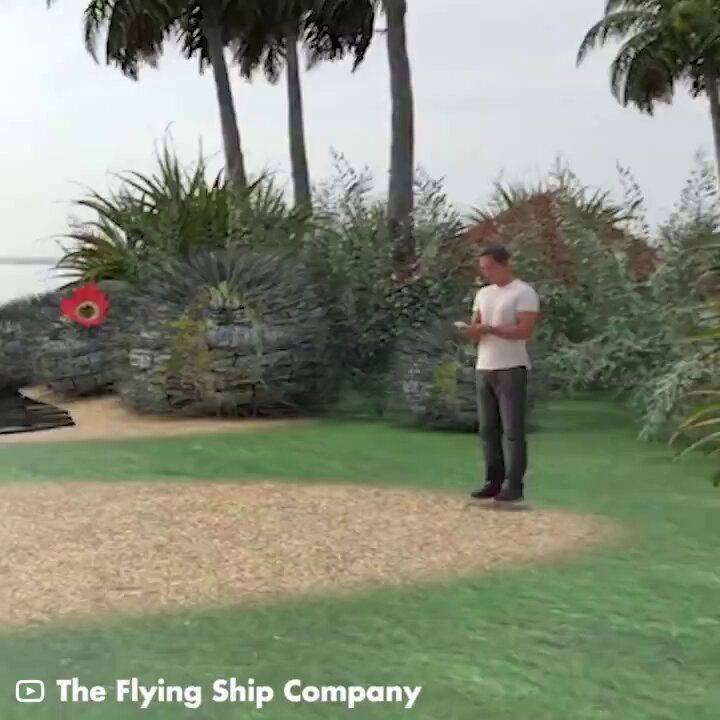In the ever-evolving landscape of transportation technology, a new innovation has emerged that promises to redefine how we traverse both air and water. Enter the Flying Ships plane-boat hybrid, a groundbreaking vehicle that seamlessly integrates the capabilities of an airplane and a boat. This innovative hybrid is not only a marvel of engineering but also a testament to the relentless pursuit of efficiency and versatility in modern transportation.
The Concept Behind Flying Ships
The Flying Ships plane-boat hybrid is designed to combine the speed and efficiency of an airplane with the versatility and accessibility of a boat. This unique vehicle can take off and land on both water and traditional runways, making it an ideal solution for regions with extensive coastlines, rivers, and lakes. The hybrid nature of this vehicle allows it to bypass the limitations of conventional transportation methods, offering a more flexible and efficient mode of travel.
Technological Innovations
The development of the Flying Ships plane-boat hybrid is a result of significant advancements in both aeronautical and marine engineering. The vehicle features a lightweight, aerodynamic design that minimizes drag and maximizes fuel efficiency. Additionally, it is equipped with state-of-the-art propulsion systems that enable it to transition smoothly between flying and sailing modes.
One of the key innovations in the Flying Ships design is its ability to utilize both air and water for takeoff and landing. This capability is made possible through the integration of advanced sensors and control systems that ensure stability and safety during these critical phases of operation. The vehicle’s wings are designed to fold and retract, allowing it to navigate through narrow waterways and dock at conventional boat docks.
Potential Applications
The versatility of the Flying Ships plane-boat hybrid opens up a wide range of potential applications. In remote and coastal regions, where traditional infrastructure may be lacking, this hybrid vehicle can provide a reliable and efficient means of transportation. It can be used for passenger travel, including luxurious business class flights, cargo transport, search and rescue missions, and even military operations.
In the commercial sector, the Flying Ships hybrid can revolutionize the logistics and shipping industries. By eliminating the need for separate air and sea transport, businesses can streamline their operations and reduce costs. The hybrid vehicle’s ability to access remote and hard-to-reach areas also makes it an invaluable asset for disaster relief efforts and humanitarian missions.
Environmental Impact
In addition to its practical applications, the Flying Ships plane-boat hybrid also offers significant environmental benefits. The vehicle’s hybrid propulsion system is designed to minimize fuel consumption and reduce emissions, making it a more sustainable alternative to traditional transportation methods. By combining the efficiency of air travel with the accessibility of water transport, the Flying Ships hybrid can help reduce the overall carbon footprint of the transportation sector.
Industry Trends and Comparisons
The development of the Flying Ships plane-boat hybrid is part of a broader trend towards hybrid and multi-modal transportation solutions. Similar innovations are being explored in other sectors, such as the Airbus Beluga, a whale-shaped plane that has gained popularity on social media for its unique design. Airbus Helicopters has also introduced the ‘Racer‘, an experimental half-plane, half-helicopter designed for speed and stability in critical missions.
Another notable development in the hybrid transportation space is the Joby Aviation hydrogen-electric aircraft, which aims to provide regional flight services with a focus on sustainability. These innovations reflect a growing interest in creating versatile, efficient, and environmentally friendly transportation solutions.
The Future of Hybrid Transportation
As technology advances, hybrid transportation options like the Flying Ships plane-boat hybrid will become more feasible. New materials, propulsion, and control systems will lead to more versatile and efficient vehicles. Soon, we may see more hybrids that blend air, land, and sea travel.
The Flying Ships plane-boat hybrid is a big step toward efficient, sustainable transportation. By combining the strengths of airplanes and boats, this vehicle could change travel and freight transport. Looking forward, hybrid transport technologies will help address modern challenges and support a more connected, sustainable world.
The Evolution of Hybrid Transport: Flying Ships and Beyond
Flying ships represent the next step in hybrid transportation, merging the efficiency of planes with the versatility of boats. These innovative crafts aren’t just about speed; they’re also designed to operate seamlessly on water, drawing inspiration from traditional watercraft like pontoon boats.
Pontoon boats, known for their stability and buoyancy due to their flat-bottomed design, have influenced many aspects of watercraft engineering. Flying ships adopt similar principles for maintaining balance and efficiency when transitioning between water and air. This blend of features ensures a smoother operation in diverse conditions, making them an ideal solution for industries ranging from tourism to freight.
For more information on related innovations, you can explore the following articles:
- TechCrunch Space: It’s a bird, it‘s a plane” it’s a rocket-powered aircraft!
- Palmer Luckey tried to crush aeronautics startup Salient Motion. But Anduril backer a16z invested.
- Indian scientists developing solar-powered plane that can fly for 90 days
- Saildrone’s first aluminum Surveyor autonomous vessel splashes down for Navy testing
- Navier partners with Stripe to offer electric boat commute to far-flung employees
- Candela’s electric ferries multiply as the startup lines up $25M in new funding
- Here comes a fully electric plane: All you need to know about the flight that aims 90% emission reduction
- China teases New Coast Guard ‘mothership’: What it means for naval warfare in the Indo-Pacific
- Indian startup The ePlane to develop electric air taxi prototype by March 2025
- SpaceX fishes Starship Super Heavy booster out of the sea (photo)
Check out more AI tools.
Elevate Guest Experience with RoomGenie
Textify Analytics – Affordable Insights at the Speed of AI
